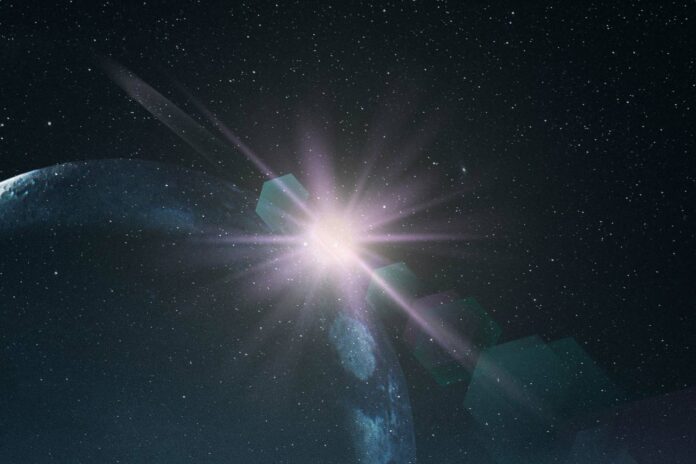Fast Radio Bursts (FRBs), subsecond-duration coherent flashes in the radio spectrum that originate at cosmological distances, are one of the most intriguing phenomena in the last decade of time-domain astronomy. FRBs have been detected at radio frequencies from 120 MHz to 8 GHz.
Most FRBs have only been observed a single time, but some, known as “repeaters,” are seen more than once.
Scientists from the SETI Institute have revealed new information about a cosmic puzzle called Fast Radio Bursts (FRBs). By discovering and closely observing the repeating FRB 20220912A using the upgraded Allen Telescope Array (ATA), they have gained insights into the nature of these signals from space.
During 541 hours of observation, scientists identified 35 Fast Radio Bursts (FRBs) from the repeating source FRB 20220912A. Using the Allen Telescope Array (ATA), they observed a broad range of radio frequencies, uncovering intriguing patterns. Notably, all 35 FRBs were located in the lower part of the frequency spectrum, each displaying a distinct energy signature.
The SETI Institute’s Dr. Sofia Sheikh, NSF MPS-Ascend Postdoctoral Fellow and lead author, said, “This work is exciting because it confirms known FRB properties and the discovery of some new ones. We’re narrowing down the source of FRBs, for example, to extreme objects such as magnetars, but no existing model can explain all the properties observed so far. It has been wonderful to be part of the first FRB study done with the ATA — this work proves that new telescopes with unique capabilities, like the ATA, can provide a new angle on outstanding mysteries in FRB science.”
The study showcases the intriguing behaviors of FRBs. The enigmatic signals, known as Fast Radio Bursts (FRBs), show characteristics like downward frequency drifting, a relationship between their bandwidth and center frequency, and alterations in burst duration over time. Additionally, the team made a novel observation: a distinct drop in the center frequency of the bursts during the two months of observation, resembling an unexpected cosmic slide-whistle effect.
Using these observations, scientists predicted a cut-off point for FRB 20220912A’s brightest bursts. This indicates a cut-off point for FRB 20220912A’s brightest bursts. This particular object, FRB 20220912A, contributed to a few percent of the strong Fast Radio Bursts (FRBs) observed in the sky during the study.
Scientists also examined the time patterns of the burst sequences, searching for any repetition within or between the FRBs. However, no clear pattern was identified, emphasizing the unpredictable nature of these celestial events.
The study underscores the crucial role of the Allen Telescope Array (ATA) in unraveling the mysteries of Fast Radio Bursts (FRBs). The ATA possesses a unique capability to record an extensive array of frequency channels simultaneously, even when they are widely separated, encompassing both very high and very low frequencies.
This enables instantaneous checks when an FRB is detected, providing insights into its behavior across various frequency ranges simultaneously. Ongoing upgrades to the ATA promise enhanced capabilities, allowing for the detection of fainter FRBs at even more frequencies simultaneously, ensuring the ATA stays at the forefront of advancing our understanding of FRBs.
Dr. Wael Farah, SETI Institute ATA Project Scientist and co-author, said, “It is exciting to see the ATA engaged in FRB research three years after its upgrade program started. The ATA boasts unique capabilities in many research endeavors, including fast transients.”
This groundbreaking discovery represents a significant advancement in the ongoing mission to uncover the mysteries of extreme objects in the universe. With each new revelation, scientists move closer to comprehending the origins and characteristics of these intriguing cosmic signals, furthering our understanding of the vast cosmos.
Dr. Wael Farah, SETI Institute ATA Project Scientist and co-author, said, “It is exciting to see the ATA engaged in FRB research three years after its upgrade program started. The ATA boasts unique capabilities that are being put to use in many research endeavors, including fast transients.”
This study could pave the way toward unraveling the secrets of extreme objects in the universe.
Journal Reference:
- Sofia Z. Sheikh, Wael Farah, Alexander W. Pollak, Andrew et al. Characterization of the Repeating FRB 20220912A with the Allen Telescope Array. arXiv: 2312.07756
